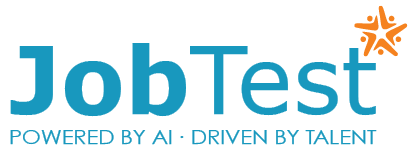
The Big Five Personality Traits Test (OPI5)
The big five personality traits are the best accepted and most commonly used model of personality in academic psychology. The big five come from the statistical study of responses to personality items. Using a technique called factor analysis, researchers can look at the responses of people to hundreds of personality items and ask the question "what is the best was to summarize an individual?"
Competency Assessment List
-
{{ !_.isEmpty(item.question_packages) ? item.question_packages.length : 0 }}
-
{{ _.isNumber(Number(item.duration)) ? item.duration : 0 }}
-
{{ _.isNumber(item.tested) ? item.tested : 0 | money }}
The big five personality traits are the best accepted and most commonly used model of personality in academic psychology. The big five come from the statistical study of responses to personality items. Using a technique called factor analysis, researchers can look at the responses of people to hundreds of personality items and ask the question "what is the best was to summarize an individual?". This has been done with many samples from all over the world and the general result is that, while there seem to be unlimited personality variables, five stand out from the pack in terms of explaining a lot of a persons answers to questions about their personality: extraversion, neuroticism, agreeableness, conscientiousness and openness to experience. The big-five are not associated with any particular test, a variety of measures have been developed to measure them. This test uses the Big-Five Factor Markers from the International Personality Item Pool, developed by Goldberg (1992).
It is important to be aware that the personality tests used in the recruitment and selection process are the intellectual property of the companies that produce them. As a result, they may use different terminology to describe the aspects of personality that they set out to measure. This usually for reasons of copyright and to differentiate themselves in a market in which there are a large number of products that do more or less the same thing in more or less the same way.
To avoid any bias and to steer clear of any copyright issues, we will use the definitions placed in the public domain by the noted psychologist Dr. John A. Johnson of Pennsylvania State University.
It is important to ignore the positive or negative associations that these words have in everyday language. For example, Agreeableness is obviously advantageous for achieving and maintaining popularity. Agreeable people are better liked than disagreeable people. On the other hand, agreeableness is not useful in situations that require tough or totally objective decisions.
Disagreeable people can make excellent scientists, critics, or soldiers. Remember, none of the five traits is in themselves positive or negative, they are simply characteristics that individuals exhibit to a greater or lesser extent
Relevant for Industries
- Banking & Financial Services
- Airlines
- Automotive
- Education & Training
- Logistics & Forwarding
- Life Sciences
- Manufacturing
- Oil & Gas
- NGO & Public Sector
- Retail
- Telecommunications
- General Corporate Functions
- Consulting Services
Most often tested categories
- Logical Reasoning Test
- Numerical Reasoning Test
- Verbal Reasoning Test
- Abstract Reasoning Test
- Diagrammatic Reasoning Test
- Data / Error Checking Test
- Faults Diagnosis Test
- Mechanical Reasoning Test
- Critical Reasoning Test
- Situational Judgment Test (SJT)
- Psychometric Test
- Tư Duy Không Gian
- Post-training Test
- English Reading Test
- Situational Judgement Test (SJT)
- DISC Awareness
- English Skill
- GOLD 2024 - English Test
- Product Knowledge
- English Listening Test
- Numerical Reasoning
- Verbal Reasoning
- Non-verbal Reasoning
- Situational Judgement
- Critical Thinking
- Problem Solving
- Job & Income
- Managers, Colleagues
- Company
- EVP
- CT Group
- Essay
- Abstract Reasoning Test
- Numerical Reasoning Test
- Critical Reasoning Test
- Situational Judgment Test (SJT)









